‘Sharp lenses’ and ‘cheap lenses’ is a Venn diagram with a very small intersection. In search of such a short-telephoto lens for equestrian photography, I started looking at the 1980s Russian slide projector lenses. On paper, the ‘USSR 35KP’ range is very tempting. Prime focal lengths from 50 to 140mm, all are f/1.8, and they’re not very expensive at all compared with the eye-watering cost of other f/1.8 telephoto lenses.
Of course, there’s a catch. What arrives in the post is just a straight aluminium tube, full of glass. No mount, no focusing mechanism, and no aperture. You can try ‘freelensing’, but with a wafer-thin depth of focus you’d better have a steady hand. Time to get inventive.
Salvation came from finding the website of RafCamera in Moscow. They sell a range of extension tubes and lens mount adapters, many of which have the same M65 thread as the Chinese focusing helicoids for sale on eBay. Suddenly this starts to look like a viable project.
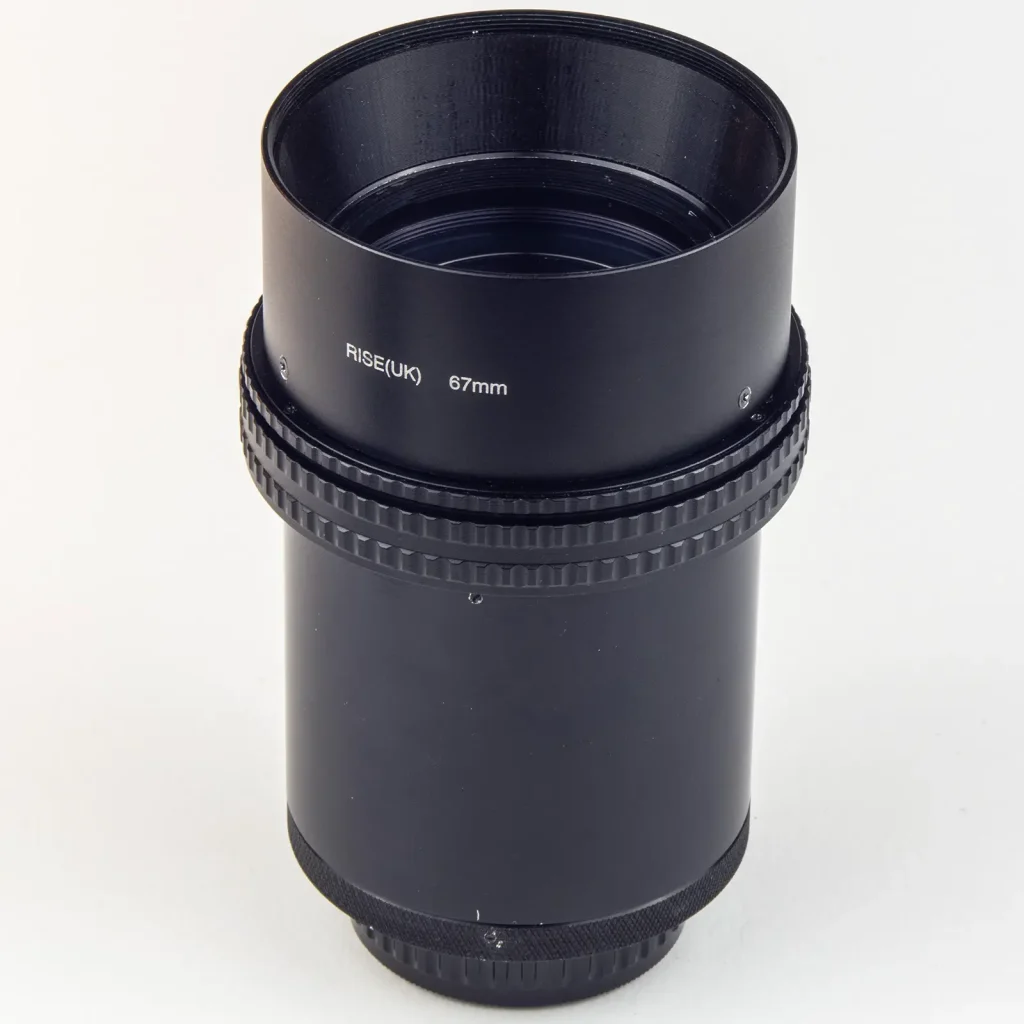
So, here’s the setup, from back to front:
- Pentax K to M42 female flanged adapter.
- M42 male to M65 female adapter
- M65 male to M65 female extension tube, 60mm long.
- M65 male to M65 female focusing helicoid, with variable length from 17 to 31mm.
- M65 male clamp ring, 62.5mm inside diameter.
- 67mm aluminium lens hood with the back cut off, leaving just the front tube which fits perfectly over the clamp ring.
- 3D printed inverse cone, to tidy up the inside of the front.
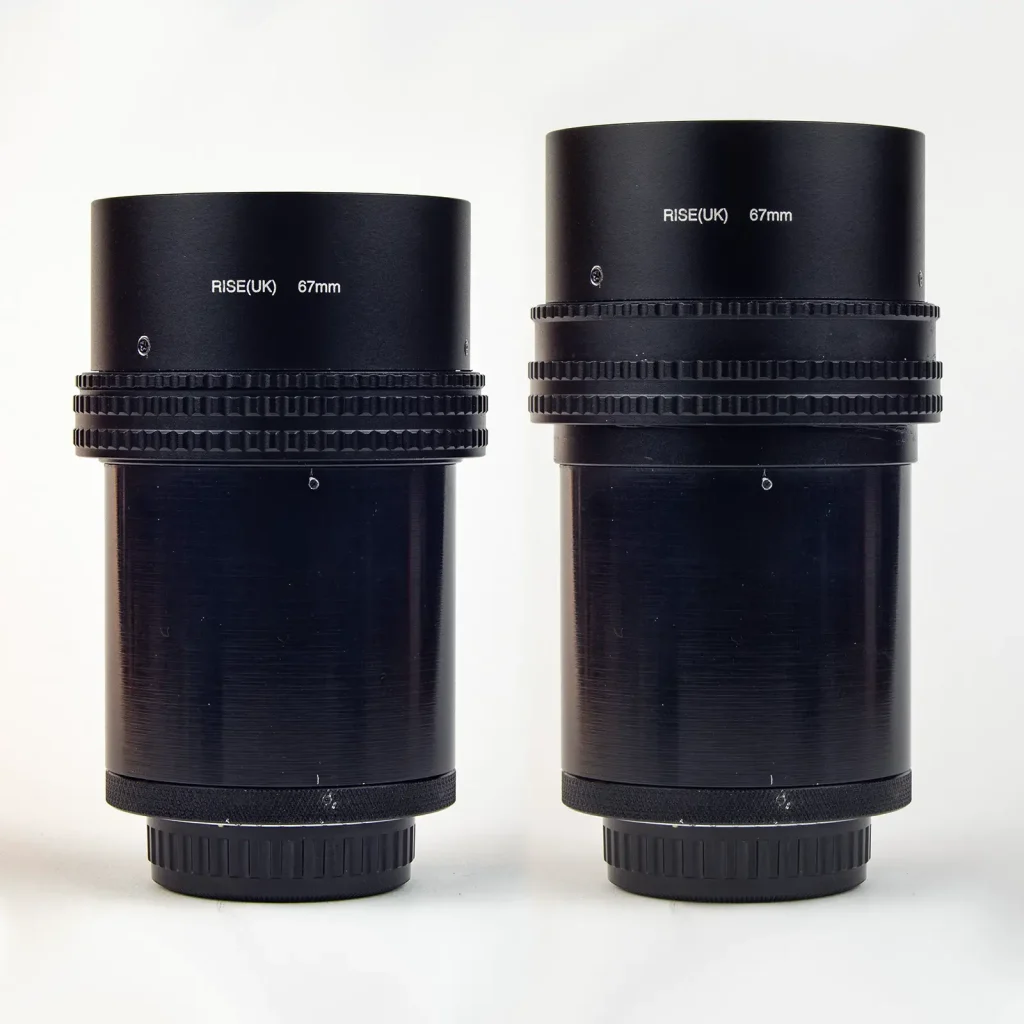
After a bit of fettling, the 35KP lens fits down the middle and is clamped in place at the front of the helicoid. That makes it really easy to set the infinity focus.
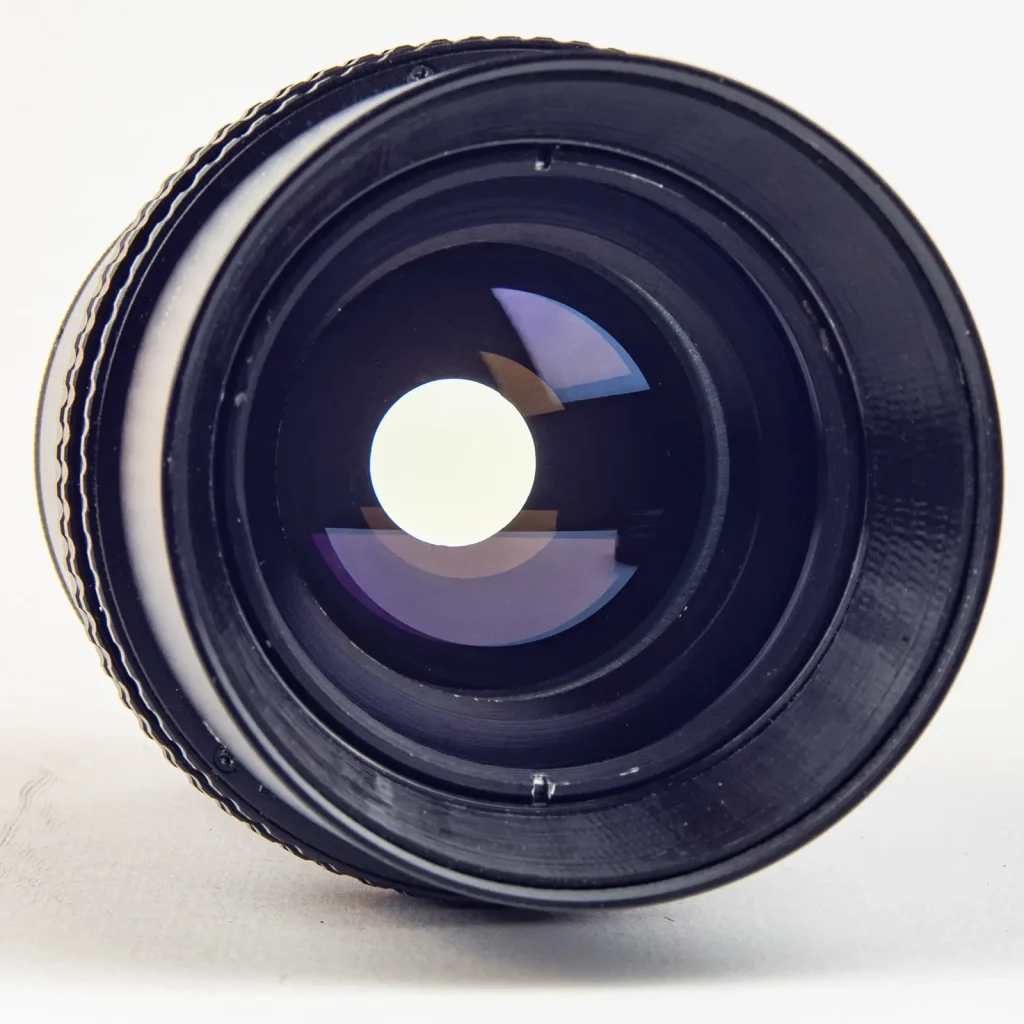
At f/1.8, this lens isn’t very practical for photographing a moving target. It’s also a bit soft and ‘glowy’, so I knew I was going to have to fit an aperture. Opening the lens up is an absolute joy. There’s a threaded stop ring at each end. Unscrew either one of them, and the whole contents of the tube will slide out in one go. There are five elements, and each one is held in its own convenient aluminium carrier. They all butt up against each other (with a spacer tube between 2 and 3) so you can’t get the spacing wrong — just be sure to remember the order and which direction they face.
When you see the optical design, it becomes obvious that the perfect place for the aperture is half-way along the spacer between elements 2 and 3. I knew the aperture disc should be as thin as practical. Time for a beer. No, really — a beer can provided the perfect material. Probably a bit too thin for a disc this size to be self-supporting, so I made support rings for each side (like a big washer) out of 1.5mm aluminium. The total length of the (now 2-part) spacer, the two support rings and the aperture disc is exactly the same as the original length of the spacer.
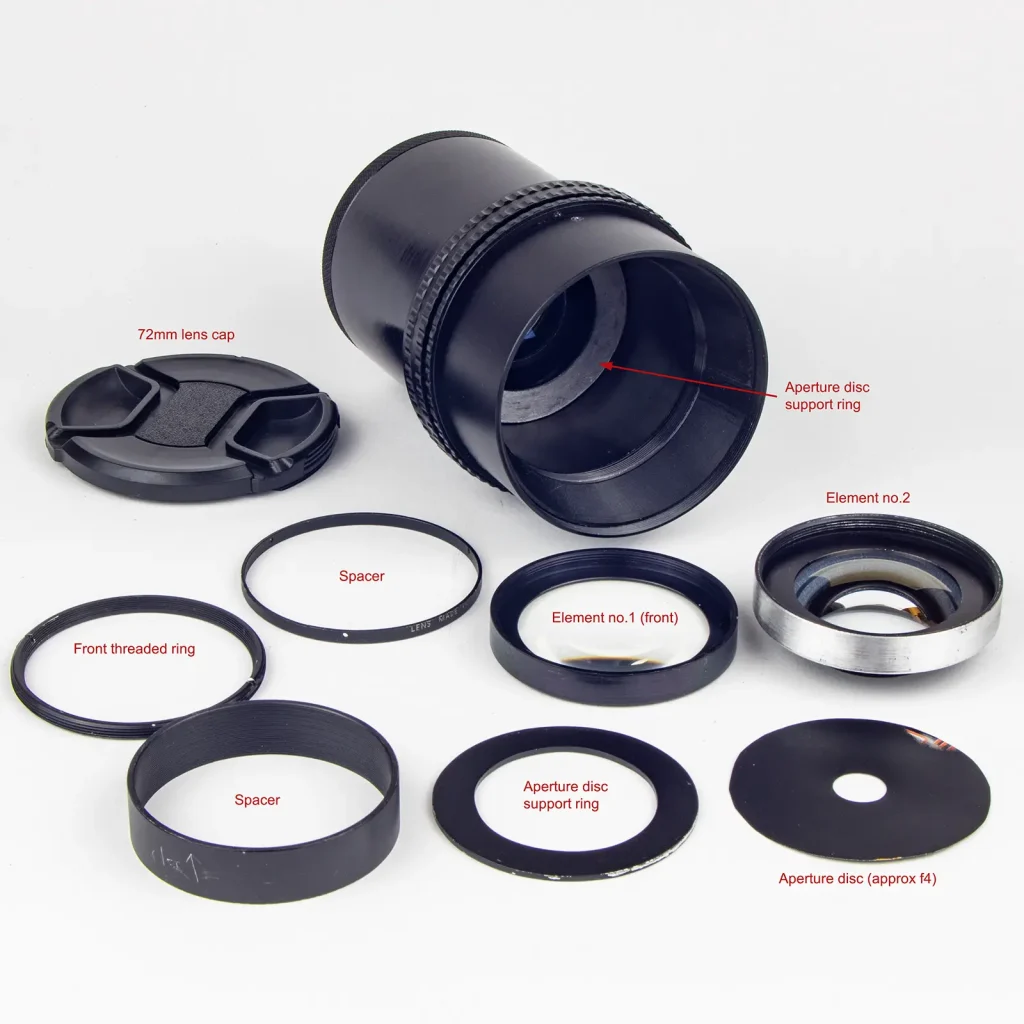
A bit of experimentation was required to work out the right size hole for the aperture. I made a range of aperture discs and took a meter reading with each one (it’s only a 5-minute job to swap them). By comparing the meter readings with a conventional zoom lens at 70mm, I could graph out the aperture hole diameter against the f-stop number. My preference was f/4.
The last job was to fit a sprung brass pin to the lens mount. For horse photography, my Pentax DSLR won’t hit its maximum burst rate unless you’re using a PK-A lens with the aperture on the ‘A’ setting. I found that one of the contact pins on PK-A lenses is insulated on manual aperture settings but becomes earthed to the mount on ‘A’. After a bit of precision engineering, I reproduced the effect on this lens. It works a treat.
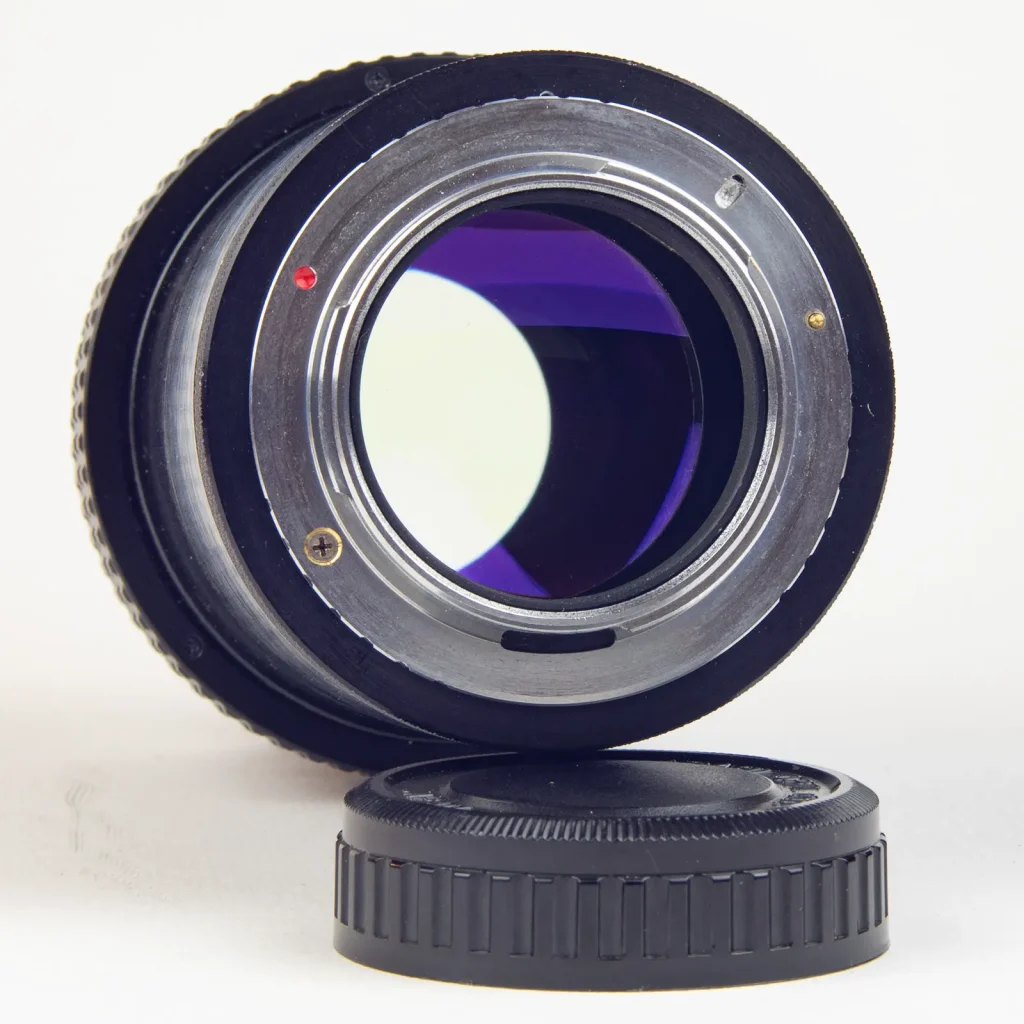
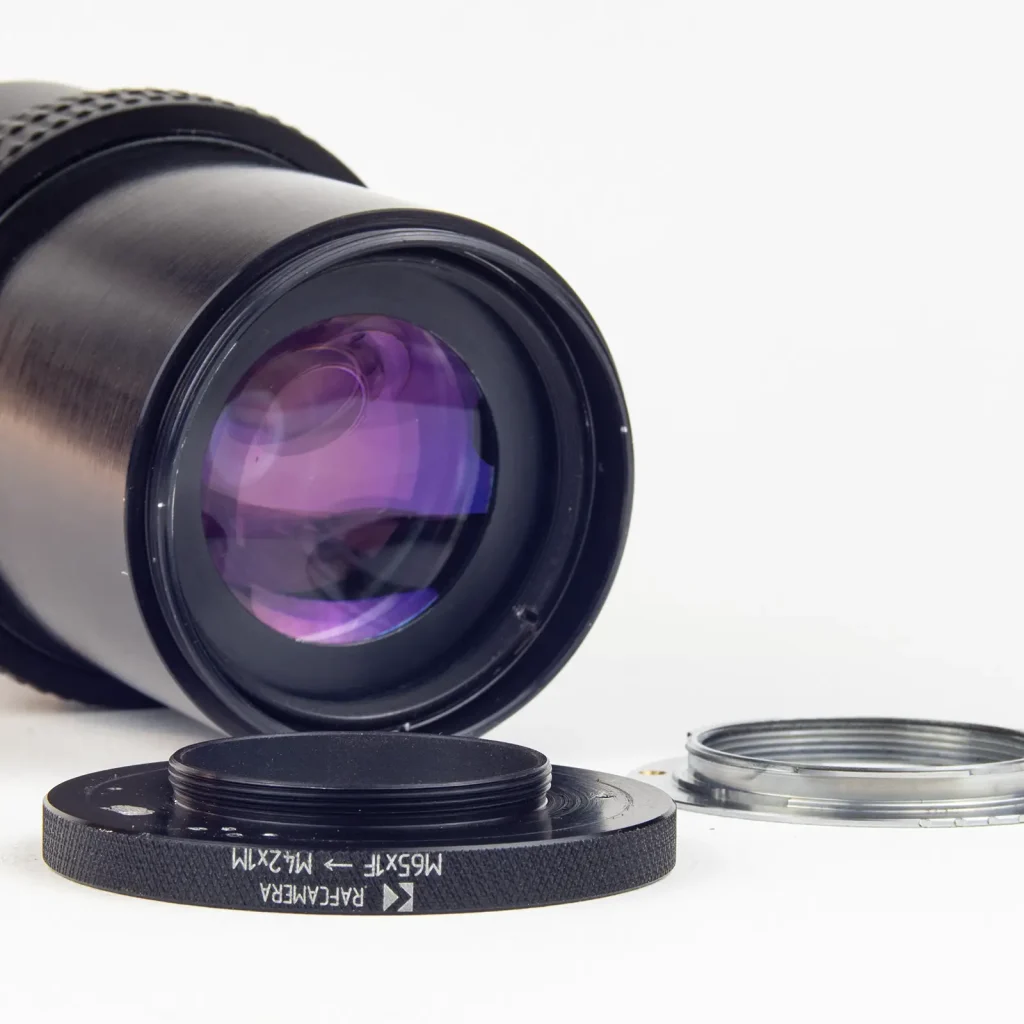
The results are impressive. Stopping the lens down to f4 sharpens it up nicely and gets rid of the glow. It gives a usable depth of focus for photographing horses, with reasonable background separation.
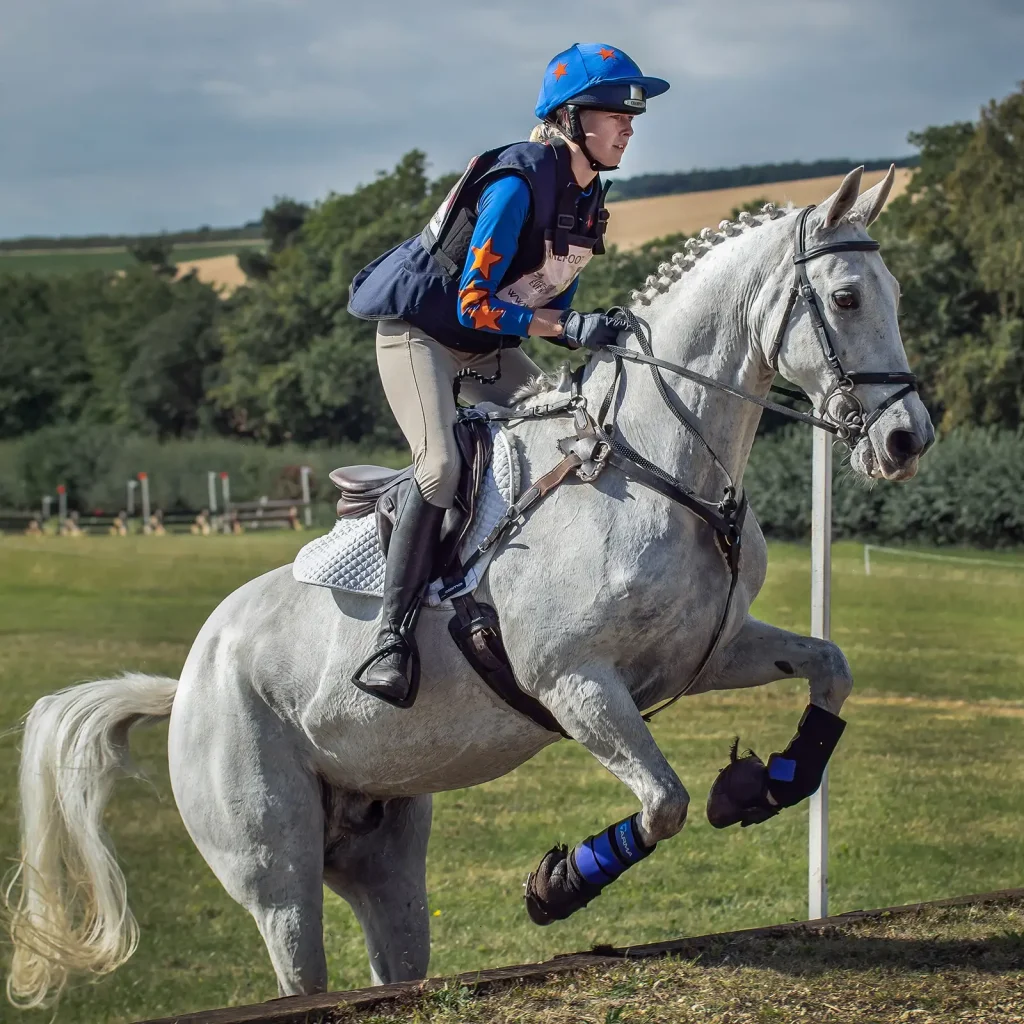
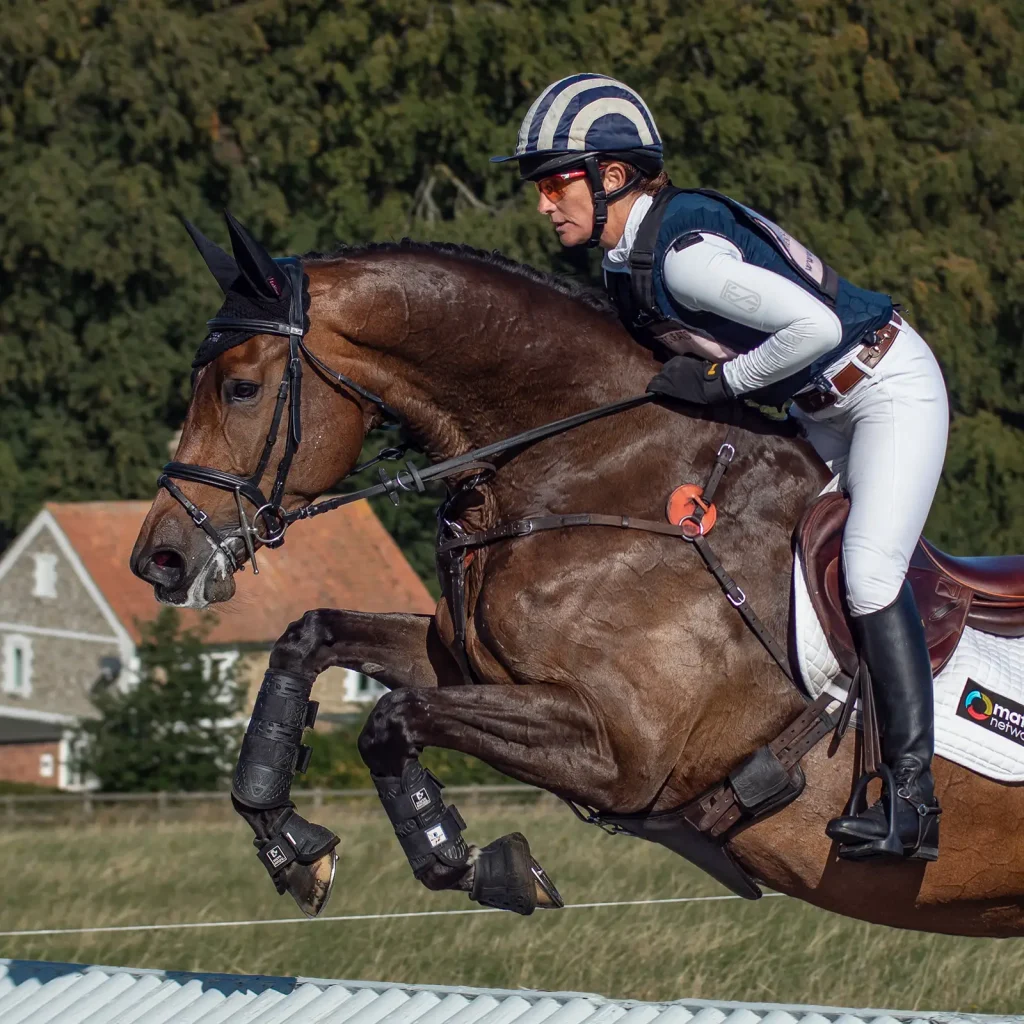
Thanks for reading
Share this post:
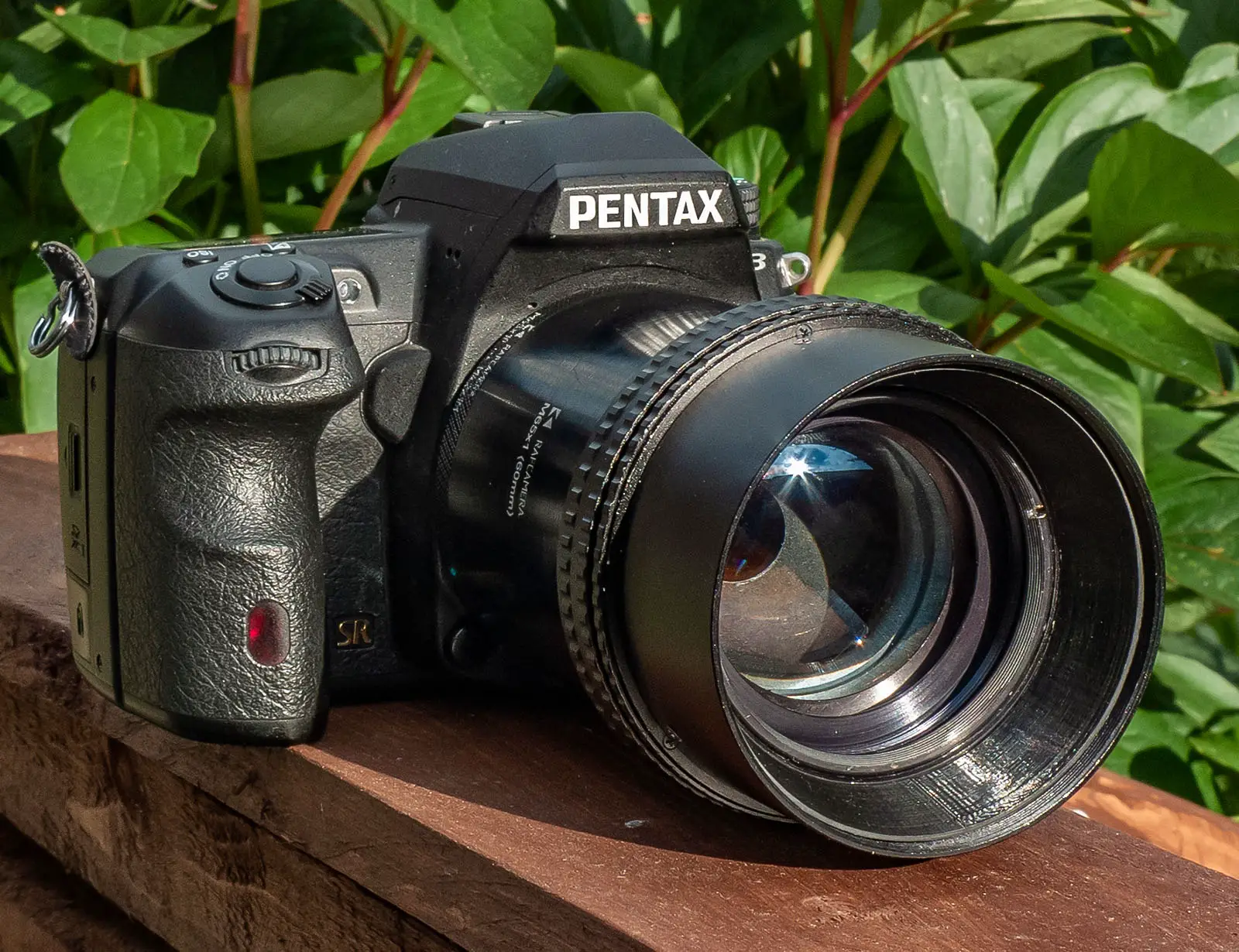








Comments
Dave Walker on Russian Slide Projector lens modification – By Stuart Jenkins
Comment posted: 10/07/2019
Comment posted: 10/07/2019
Faraz on Russian Slide Projector lens modification – By Stuart Jenkins
Comment posted: 10/07/2019
Comment posted: 10/07/2019
Comment posted: 10/07/2019
Roger B. on Russian Slide Projector lens modification – By Stuart Jenkins
Comment posted: 10/07/2019
Comment posted: 10/07/2019
Kodachromeguy on Russian Slide Projector lens modification – By Stuart Jenkins
Comment posted: 10/07/2019
Comment posted: 10/07/2019